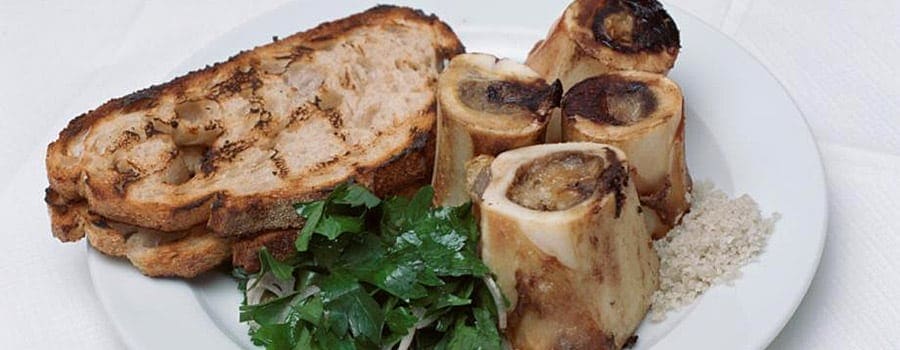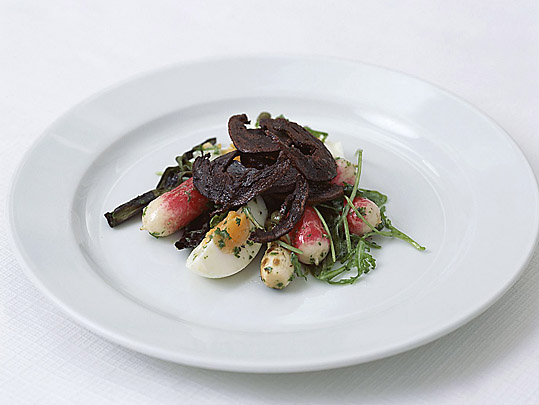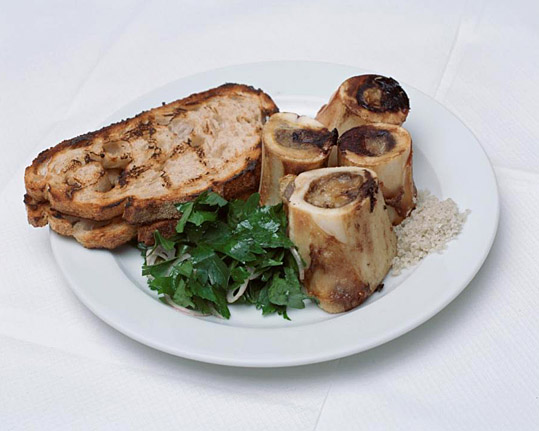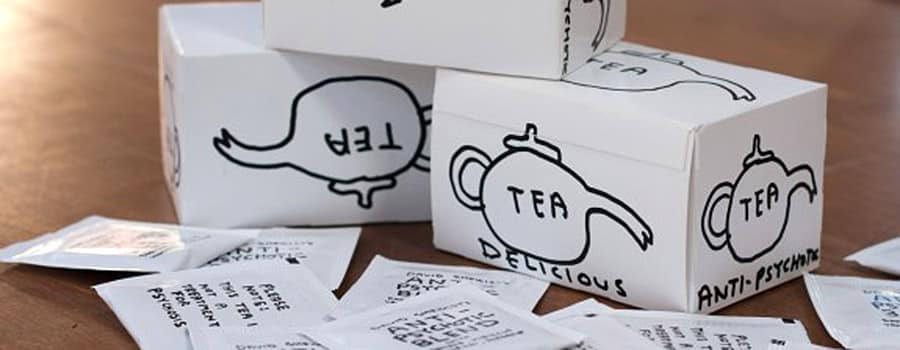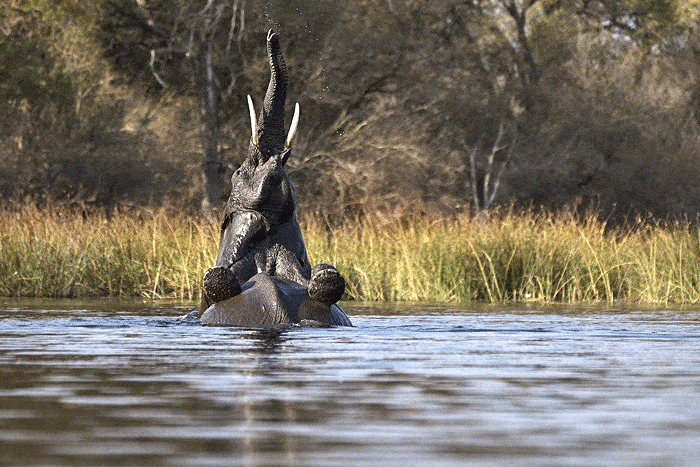From Offal to Ears: On Fergus Henderson, Nose to Tail, Ersatz oranges, and the dodginess of Chicken Kiev
It’s a freezing October morning and I’m sitting in the glorious warmth of St John Bar & Restaurant in Smithfield. The buttery scent of pastry wafts from the bakery in the next room and a there’s a small-scale symphony of kitchen noise in full swing a few feet away.
I am waiting to meet Fergus Henderson, the London chef best known for his love of nose-to-tail cooking and the Michelin-starred restaurants he does it in (the one I’m at) and its younger brother St John Bread & Wine in Spitalfields. Henderson’s latest book, The Complete Nose to Tail, has just been released, and I am looking forward to a chat about brains, tails, and everything in between.
Nose-to-tail refers to the practice of eating every edible part of an animal – not just the ‘choice’ cuts we’re offered in supermarkets. The Complete Nose to Tail includes recipes for everything from trotter, liver, back fat and spleen to entire heads. The term is most commonly applied to pigs, but there’s no reason to stop there – as the recipes for eel, snail and squirrel attest.
Fergus Henderson arrives and downs a fernet branca in a single gulp. I stick to my cappuccino. I am full of questions and, while he must have answered them all a thousand times before, he is fizzing with responses. I am curious about Henderson’s history of cooking nose-to-tail: was it a lightning bolt revelation, or something more organic? “There wasn’t really a moment where I saw a golden trotter on the hill and said, ‘I will cook you,’” Henderson says with a twinkle, “It’s always been a feature of my life.” His mother cooked with offal, so naturally he did too – once a tripe man, always a tripe man.
The odd thing about nose-to-tail is that there’s absolutely nothing new about it; people have been eating offal for time immemorial. Indeed, most people in the world continue to do so today. But at some point in the last century it dropped right off the food radar in the West, and only now is it beginning to be restored to its proper place – helped, no doubt, by the catchy moniker. Henderson’s books have played their part, as has a growing focus on nose-to-tail in the media (I first heard of it on an episode of the Australian Masterchef). I mention that nose-to-tail is fast becoming a household term, which can only be a good thing… right? – but Henderson is quick to distance himself from the flash-in-the-pan attentions of popular culture. “It’s not meant to be a fashion, or a trend,” he says, “They’re all bad words. It’s… an approach.”
As we talk I am particularly struck by the degree of respect underpinning this approach. There’s an oft-quoted line from Henderson that goes, “If you’re going to knock it on the head, it seems only polite to eat the whole thing.” After all, raising an animal for its meat then throwing away a considerable percentage of its edible parts is a fairly appalling waste of a life and the resources that went into creating it. In a post about eating offal on the Scientific American blog, Serbian-born Bora Zivkovich describes the experience of killing an animal in poorer, rural areas where wastage is simply not an option:
In such places… there is an almost spiritual connection to the farm animals – the slaughter is not something done lightly. It usually involves the entire large family (and friends and neighbours), the slaughter is performed with utmost care, almost ritually. And the greatest care is made not to let any piece go to waste.
It’s several worlds away from the disconnect experienced by consumers today, for whom meat arrives pre-cut and packaged, and animals are slaughtered far off where we don’t have to see. On that note, we fall into a discussion about consumer taste and the role supermarkets play in dictating choice and availability – for example, how the idea of ‘meat’ has typically come to represent just four main animals: chicken, cow, pig, and sheep. Henderson seems particularly disturbed by what he terms an ‘ersatz’ approach to food, where consumers are only offered products conforming to standard ideas of what the product should look like. For example, the “perfectly round oranges” that define supermarket conceptions of an orange. What about Seville oranges (“crazy, gnarled things”), or the tumbled roughness of fresh pasta?
In fact, the nose-to-tail approach neatly dovetails with global movements to protect regional variety in food. Following the rise of the Slow Food movement in the late eighties, consumer attention has increasingly focused on the methods, impacts and ethics of large-scale food production – and increasingly found them wanting. Consumer shifts towards local, organic and free-range produce reflect a growing concern with how our food is produced, as do education projects like Stephanie Alexander’s Kitchen Garden Program in Australian schools (and an almost identical program being piloted in England by Jamie Oliver). Similarly, Henderson returns again and again to the subject of understanding, of knowing where things come from. He reaches with his fingertips and plucks at an example: Chicken Kiev. It’s a “very dodgy angle” in his opinion. Why? Because there are no bones and “it doesn’t look like anything at all.” Hearts, on the other hand – they’re “where the animal comes from”.
It would take a very staunch offal-opposer indeed not to be swayed by the affection and enthusiasm in Henderson’s voice as he talks about his core ingredients. His love of brains (“like eating a rich cloud… a crunch and then rich goo”) is second to none. He talks about the “gentle, nurturing approach” required for cooking offal. For anyone attempting it the first time he has this advice: “There’s nothing scary about it because it’s delicious… Treat [it] with love and spirit and a sense that you’re in charge and you’ll be fine.”
I ask how Fergus Henderson sees the role of nose-to-tail in British cooking. The English palate may be at home with steak-and-kidney pie, black pudding, tripe… but brains? Pigs’ heads? Certainly offal has “lost its way” a little in British cuisine, he says. It “needs a little more help than, say, Italy or France…” I wonder whether he envisions a future in which more people eat nose-to-tail: whether, perhaps, the book is in part a means to this end? To which he replies with disarming simplicity, “It’s not a manual for the future, no… More for lunch.”
More information on Fergus Henderson and The Complete Nose to Tail see www.stjohngroup.uk.com
words Marion Rankine


